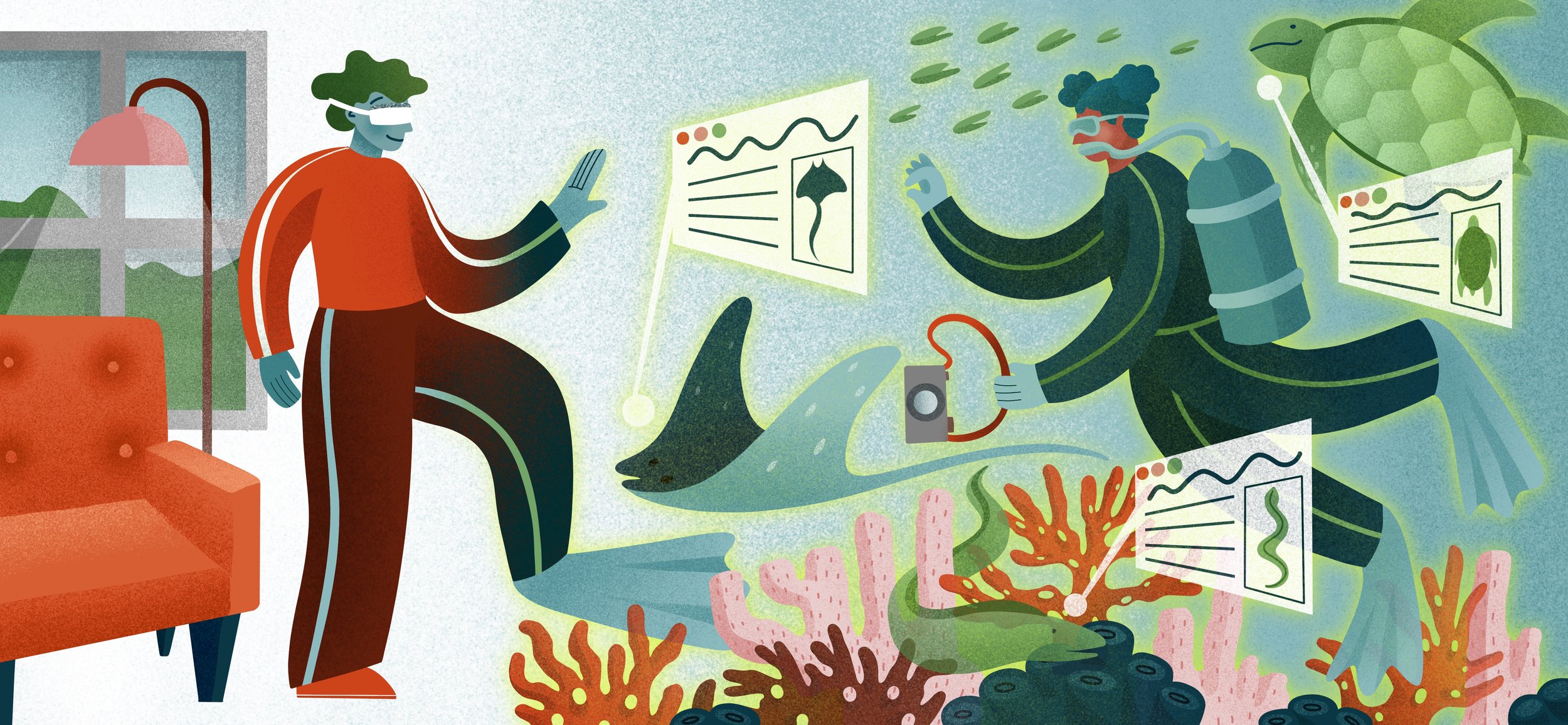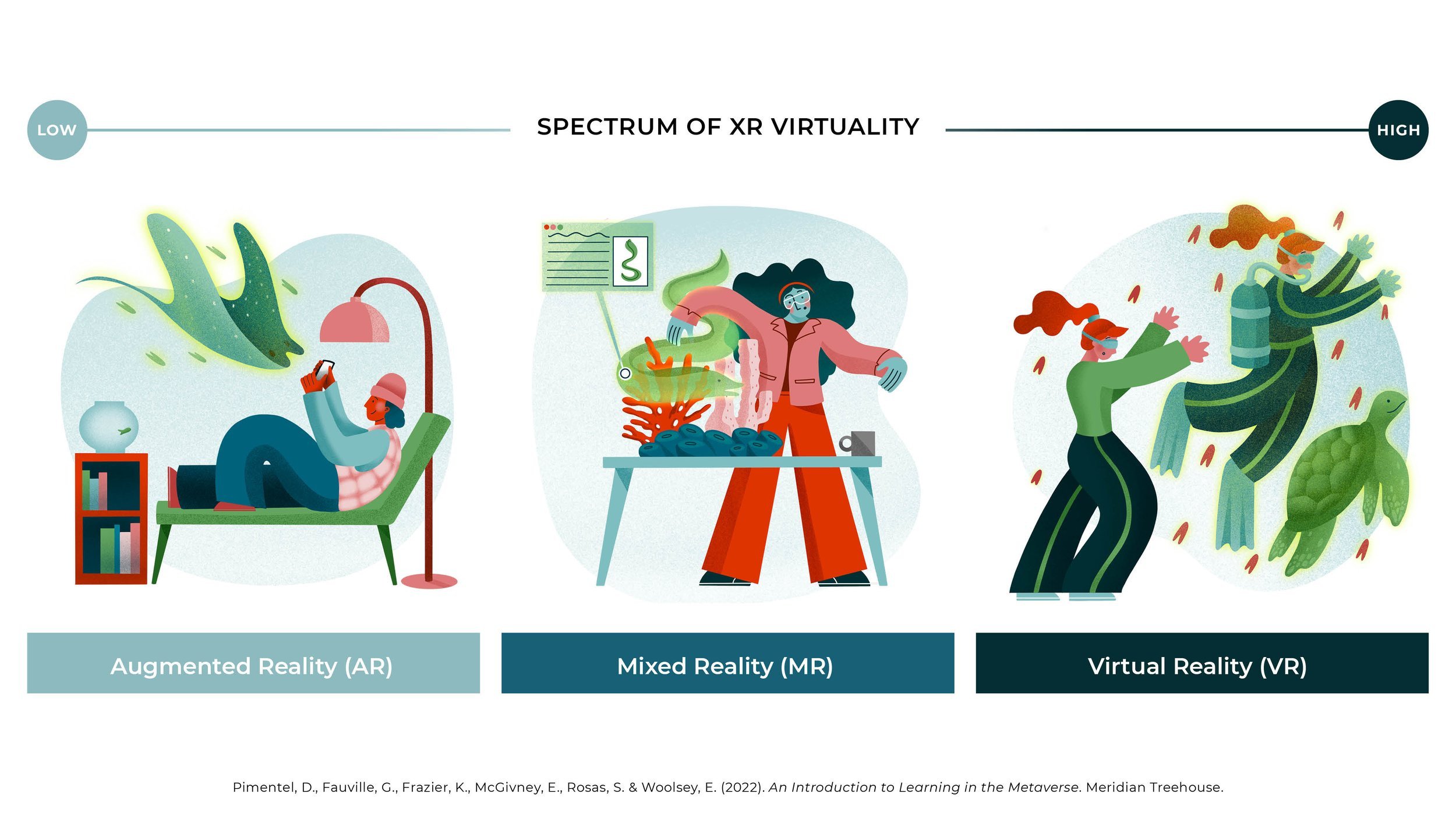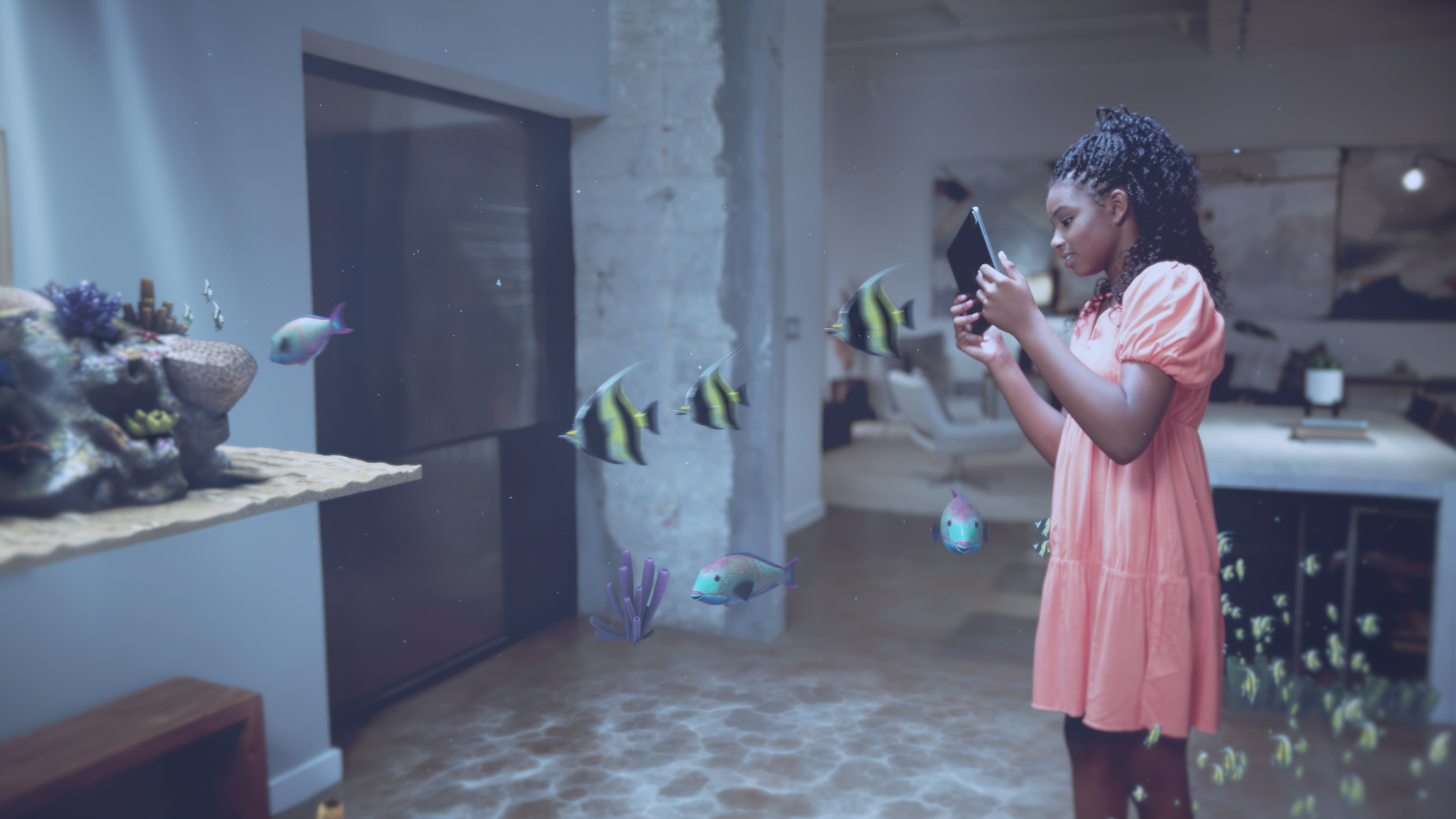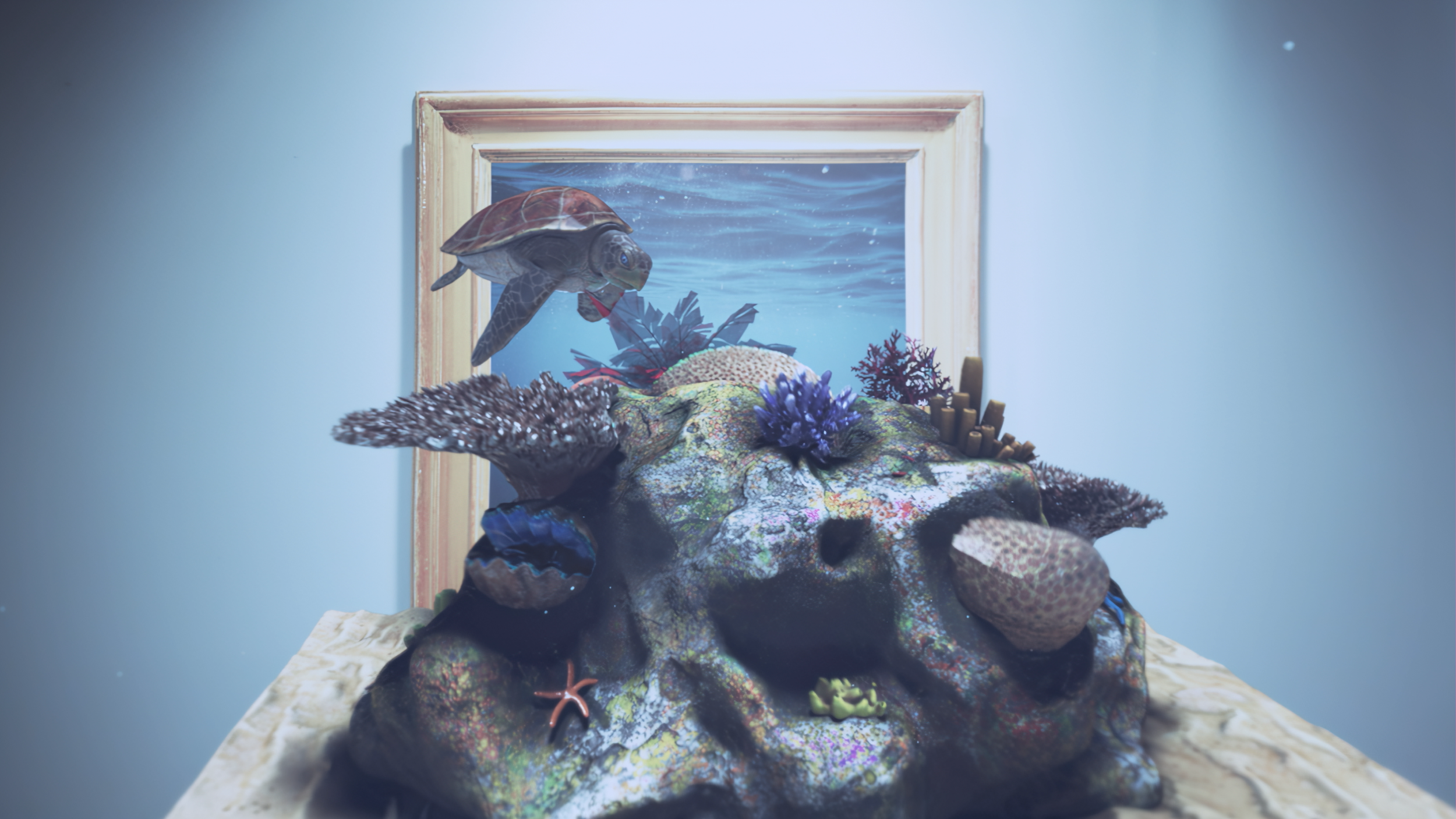What is XR?
With the rise in awareness around the Metaverse, you may also be hearing a lot about extended reality, or “XR” for short. So what exactly is XR beyond being one of Apple’s iPhone lines?
The TLDR on XR
Super simply put, XR is a umbrella term for a variety of technologies that merge the real and virtual worlds. You’re probably neck deep in XR now and didn’t even realize it: Zoom backgrounds anyone? Yep, that’s XR. Google Maps? XR. Social media effects that make you sparkle or give you bunny ears? XR. See, you’re already an expert and didn’t even know it! Of course there are also more “complicated” varieties of XR that you may not be as familiar with such as those where you put on a headset, but no matter the level of perceived complication, the gist of it remains the same:
XR = Real World + Virtual World
Breaking Down XR
XR technologies typically fall into three categories: augmented reality (AR), mixed reality (MR), and virtual reality (VR).
XR = AR, MR & VR
These distinctions are based on the degree to which the real and virtual worlds interact and can be visualized as a “spectrum of virtuality.”
Where a technology or experience falls on this spectrum is also indicative of other similar traits. We'll break those down in the following sections or you can zoom in and explore this table.
Augmented Reality (AR)
Augmented reality is the most "basic" form of XR, and is often more limited when it comes to interactions between the physical and virtual worlds, but that doesn’t make it any less fun, and it acutally makes it the most accessible — you typically only need your phone and an app with AR functionality like filters, effects, or backgrounds.
Examples of AR include Pokémon GO, or for the selfie fans among you, you can thank AR for effects on social media apps like Instagram, Snapchat, and TikTok.
From an educational standpoint, you can imagine students using smartphones to scan an image of a manta ray in their textbook. An animated 3D model of the manta ray comes to life through their phone screens and as they move their phone around it, overlays of text pop up with factual information.
An active example of something similar to this is AR Reef, an experience that our friends at the ocean empathy non-profit The Hydrous created with the Smithsonian and Adobe.
Mixed Reality (MR)
Mixed reality sits right in the middle of things — virtual content is able to merge more seamlessly with the physical environment than is possible with AR. Your spatial surroundings are taken into account and virtual characters or objects can interact with physical ones around you. For example, a virtual moray eel might be able to swim in front of, behind, underneath, and around physical objects in your room or around a 3D coral model in a lab. This would not be possible with AR where virtual objects are merely superimposed on the real world.
Because of this interaction between real and virtual worlds, our current phones are often not enough. Instead, you may need to wear a head-mounted device (HMD) with a see-through lens that allows you to see both your physical surroundings and the virtual components. Meta and Apple have both teased plans for their own mixed reality devices so watch this space!
Virtual Reality (VR)
Virtual reality is the most immersive type of XR experience; you adorn a headset to “enter” a virtual 360-degree world. In the most typical experience, the headset will replace your visual and auditory reality (depending on the level of noise around you and the device you are wearing). However, you are still present in your physical surroundings and can smell whatever is cooking in the kitchen!
The Hydrous’s “Immerse” underwater dive experience is a good example of VR, one which can be viewed in 360-video on web but is best experienced via headset where you can really look all around and feel like you are underwater.
Some VR experiences also use handheld controllers where you can engage in the virtual world through your motions as in National Geographic’s Explore.
And for next level VR experiences, check out the Carne y Arena border crossing experiential installation and film where you go to a physical installation space with sand on the ground and the heat turned up, and once you don the VR headset, it feels as if you were making the border crossing journey yourself.
VR can also be a communal experience! We’ve started creating “Shared Synchronized Immersive Reality Experiences” (SSIRE) - sorry another acronym. These are “events” where multiple people at the same location or across locations experience the same VR experience at the same moment. For example, for World Oceans Week we hosted an award-winning live virtual event “Expedition Palau” with Dr. Erika Woolsey of The Hydrous. She shared her love and knowledge of the ocean via livestream and then prompted people to put on their headsets to experience a virtual dive, which she guided everyone through in real time. Pretty exciting stuff if we do say so ourselves!
In Conclusion…
To recap, XR encompasses a wide variety of technologies and experiences that blend the real and virtual worlds. The degree to which it does that determines if it is considered AR, MR, or VR. But even within these categories, there are degrees of interactivity and technicality that make each experience unique, and sometimes the lines blur between them. So really, while XR = AR, MR, and VR, it is really more than that:
XR = Real World + Virtual Worlds = AR, MR, VR + Everything in Between and Beyond!
Geek Out With Us More
If you’re interested in digging into this topic even more, particularly from an educational perspective, we encourage you to review our evidence-based “Introduction to Learning the Metaverse” where we explore topics like the history of technology and education, when and how to integrate XR into learning, its pros and cons, and more!







